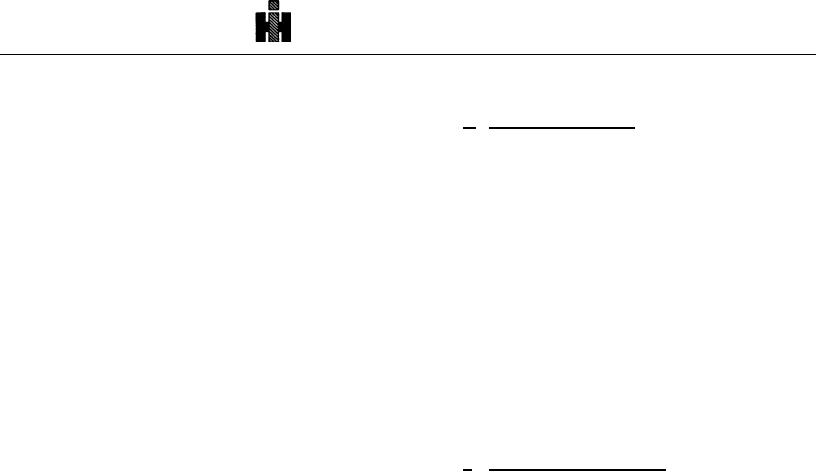
TRUCK SERVICE MANUAL
TRANSMISSION
HT 700D SERIES TRANSMISSIONS
before going to the cooler. A flow of air or water over or
g. Rear Governor Circuit
through the cooler removes the heat from the
(1) Governor feed is merely main pressure
transmission oil.
directed to the governor valve. A centrifugal-type g o v e
(3) Lubrication oil (green) is directed through
r n o r, driven by the transmission output, controls the
the transmission to components requiring continuous
position of the governor valve. The position of the
lubrication and cooling. The lubrication oil then drains
governor valve determines the pressure in the governor
into the sump. Oil in excess of that required by the
circuit. When the transmission output is not rotating,
lubrication circuit escapes to the sump through the
governor pressure is negligible. When the transmission
lubrication regulator valve.
output rotates, governor pressure varies with the speed
of rotation.
f. Selector Valve, Forward
Regulator Circuits (foldouts 5, )
(2) Governor pressure is directed to the shift
signal valves and to the governor accumulator valve.
(2) THE SELECTOR VALVE can be shifted
(3) The governor accumulator valve is a
into seven lever positions; (R) reverse, (N) neutral, (D5)
spring-loaded valve in a straight bore. The accumulator
drive 5, (D4) drive 4, (D3) drive 3, (D2) drive 2, (D1) drive
valve absorbs pressure surges and provides a more
1.
Attach of these positions, the selector valve
uniform governor pressure.
establishes the hydraulic circuit for operation in the
condition indicated.
h. Modulator Pressure Circuit
foldouts 5, )
NOTE
The quadrant designations listed above
(1) The modulator valve produces a
are not necessarily the same as those in
regulated, reduced pressure which is derived from main
the vehicle.
pressure. The valve is moved rightward by a spring at
the left end of the valve when the throttle is closed. The
(4) drive 1, drive 2, drive 3, drive 4 and drive 5
valve is moved leftward by the cam and spring action
are forward ranges. Anytime the vehicle moves forward,
when the throttle is opened. When the spring force at
regardless of what range was selected, it starts in first
the left of the valve is imbalance with the spring force
gear. Shifting is automatic in any of the above ranges,
and modulator pressure at the right end of the valve,
varying with vehicle speed and throttle position.
modulator pressure is regulated.
(6) The forward regulator pressure i s directed
(2) When the throttle setting is increased, the
from the selector valve to the main-pressure regulator
upward (or downward) movement of the actuator cam
valve when the selector valve is in any position except
forces the modulator valve toward the left. This leftward
reverse. In neutral and all forward drive ranges, this
movement reduces modulator pressure. When the
regulator pressure assists the pump pressure acting
throttle setting is reduced, the downward movement of
downward upon the main pressure regulator valve. In
the actuator cam allows t he spring at the left end of the
reverse, the neutral-forward pressure is absent from the
valve to return the valve to another regulating position.
main-pressure regulator valve. This allows the valve
Because the throttle setting is varied w it h load and
spring to exert its full force upward against the regulator
engine speed, modulator pressure varies also.
valve, causing an increase in main pressure. This
increase in pressure is necessary for higher clutch
(3) At all the shift signal valves, modulator and
pressures, to handle the high torque produced in reverse
governor pressures act on calibrated areas to upshift the
gear.
valves against
687

